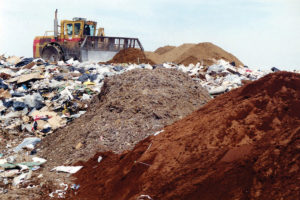
One of Superfund’s most notorious aspects is the expansive liability regime. The law imposed strict liability on past and present owners of waste sites and those in any way involved with the waste disposed there. Superfund liability is also joint and several, so a single firm can be held liable for an entire cleanup, even if only responsible for a fraction of the harm. The average cost for cleaning up a single waste site is approximately $20 million, which leads potentially liable firms to pursue litigation or other means of spreading the cleanup costs among additional potentially responsible parties. This is but one reason the statute may have done more to generate legal fees than to protect the environment or public health.
This past term, the Supreme Court took a small step toward restoring sanity to Superfund liability. In the combined cases of Burlington Northern and Santa Fe Railway Co. v. United States and Shell Oil Co. v. United States, the Court considered the scope of “arranger” liability and when it is appropriate for federal courts to apportion cleanup costs among potentially responsible firms. In an 8-1 decision, the Court trimmed unnecessarily expansive interpretations of the Act and moved toward a more workable liability regime.
Superfund’s definition of potentially responsible parties—those who can be liable for waste site cleanup—includes any person or firm “who by contract, agreement, or otherwise arranged for disposal or treatment” of hazardous waste. A federal appeals court interpreted this language to extend liability to a firm that sold hazardous chemicals with knowledge some leakage could occur during its transport and delivery. Although the company was selling a useful product, the court held it also “arranged” for disposal because “disposal of a hazardous substance was . . . a necessary part of the sale and delivery process.” The federal government agreed, arguing that firms selling potentially hazardous chemicals should be held liable if they are aware that improper disposal of the product could eventually result.
Writing for an eight-justice majority, Justice Stevens made quick work of this expansive interpretation. To “arrange” for disposal, he explained, is to take action directed at disposal. Selling a product that could be improperly disposed of by another is not the same thing. Further, “knowledge alone is insufficient to prove that an entity ‘planned for’ the disposal, particularly when the disposal occurs as a peripheral result of the legitimate sale of an unused, useful product.” With this opinion, Justice Stevens ensured that “arranger” liability would only apply to those who actually arrange for the disposal of hazardous waste.
In another portion of the opinion Justice Stevens made clear that cleanup costs should be apportioned among potentially responsible parties when there is a reasonable basis for determining each party’s relative contribution. This reduces the likelihood that a single firm will be left holding the bill for another’s bad acts. Firms seeking to avoid joint and several liability still bear the burden of demonstrating apportionment is possible, but where such evidence is available, cleanup liability can be assigned in a more equitable fashion.
Making polluters pay is an admirable goal. Polluting firms and individuals should be held responsible for the environmental damage they cause, but not for the harms caused by others. A focus on liability for actual harms caused was a virtue of the common law approach to environmental harm. Federal law governing hazardous waste cleanup and remediation is still a long way from the common law ideal, but with the Burlington Northern and Shell Oil decisions, the Supreme Court brought hazardous waste liability one step closer to sanity.



